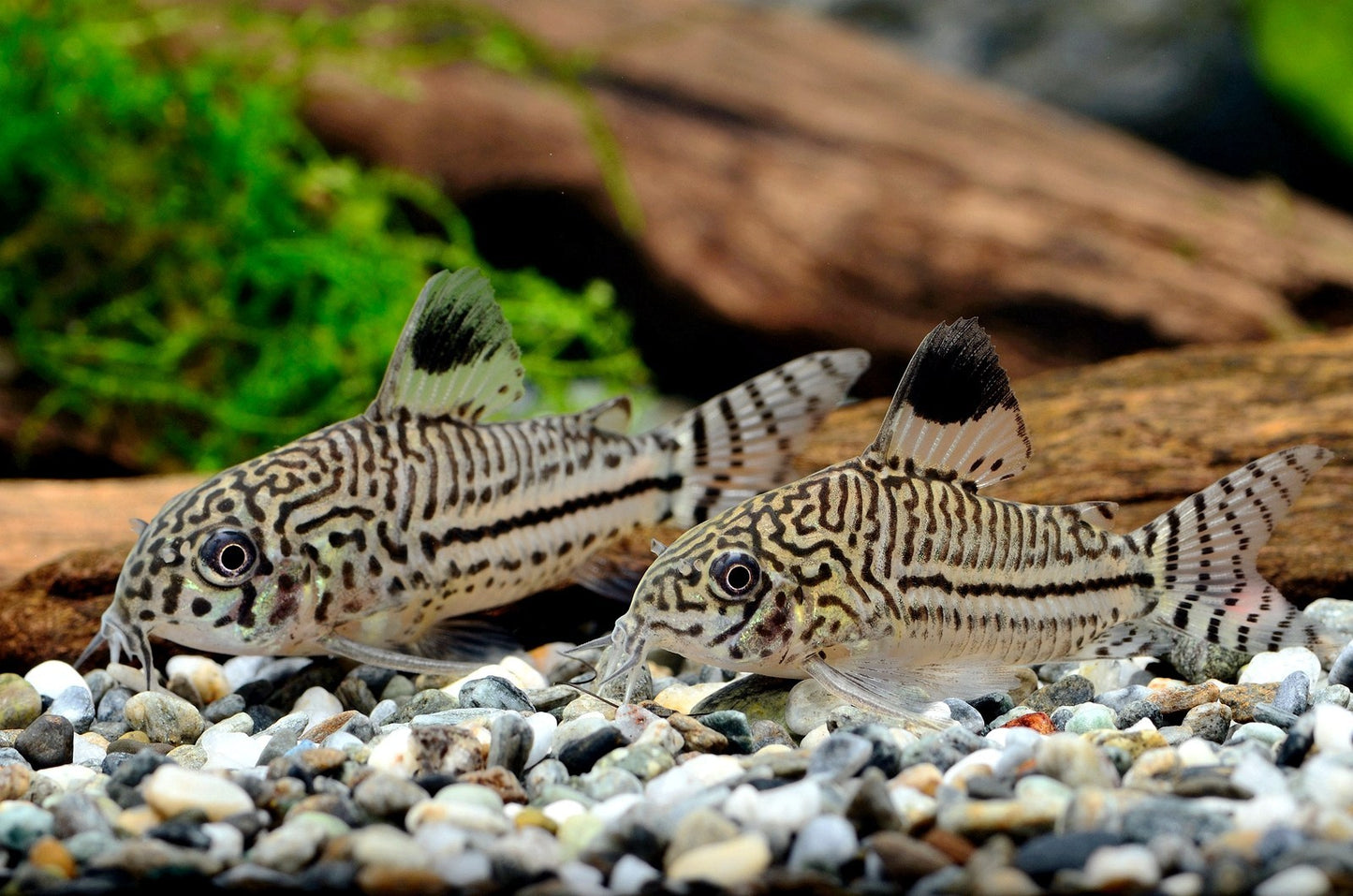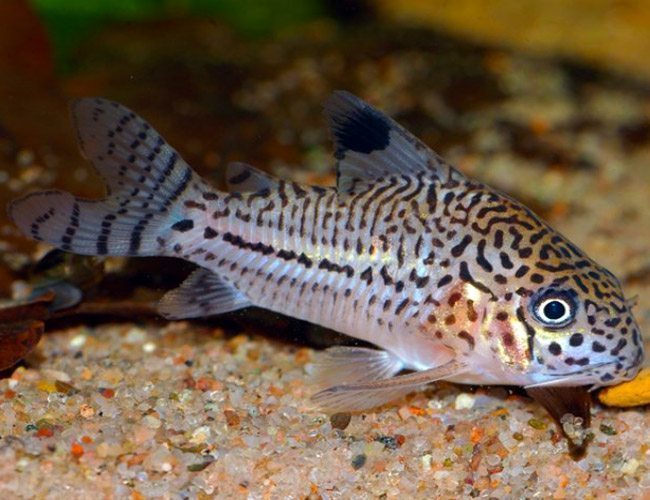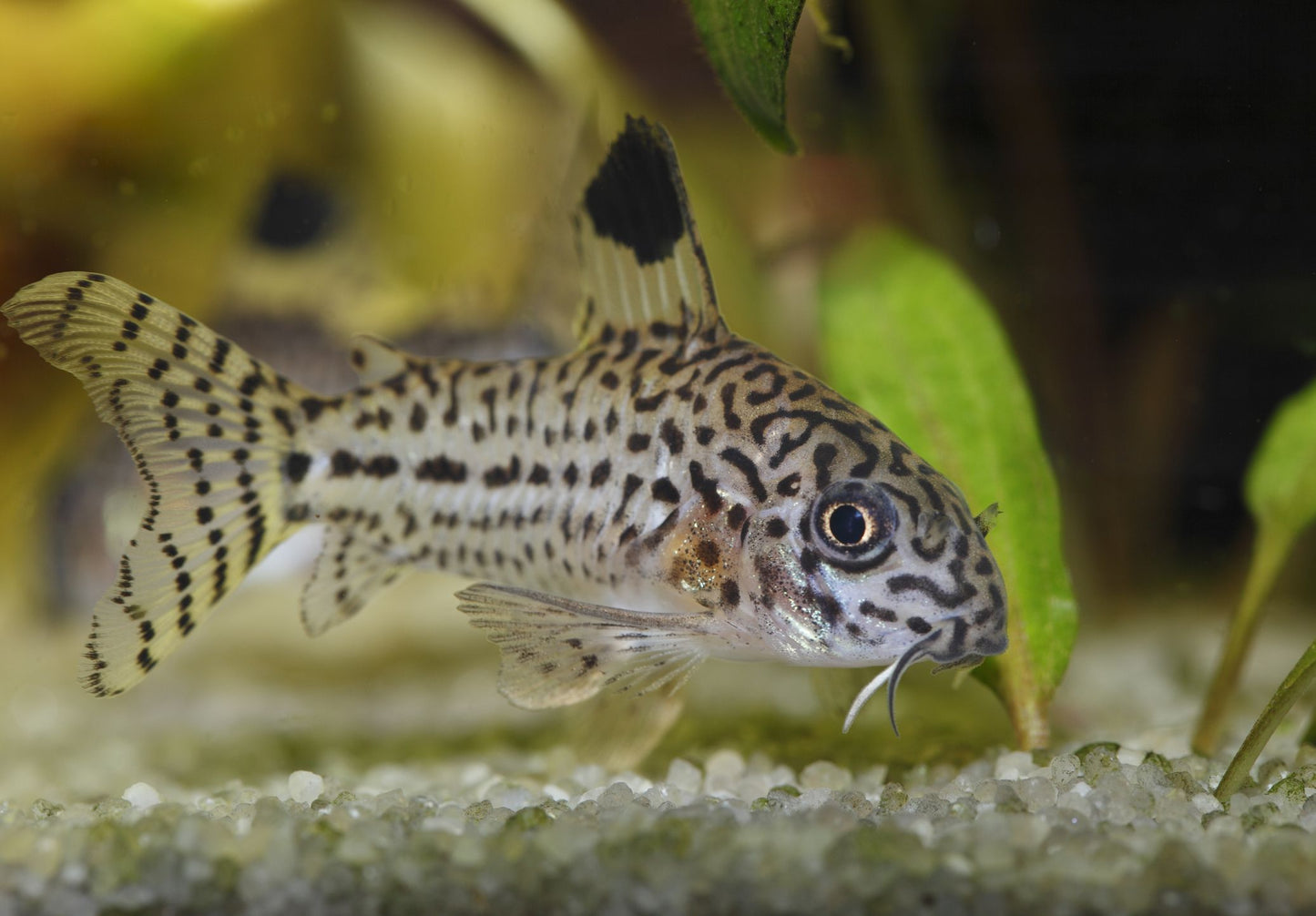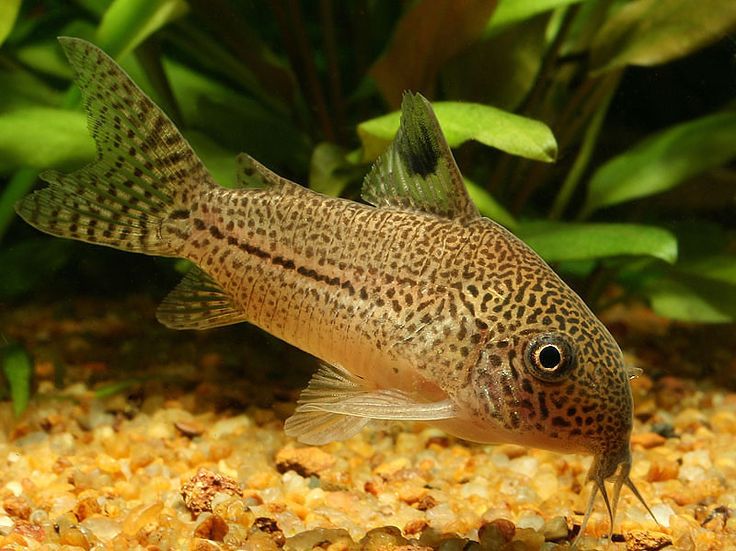Julii Cory (Corydoras julii) - Live Fish
Julii Cory (Corydoras julii) - Live Fish
Total items
Product subtotal
Detailed Description
Detailed Description
Julii Cory Catfish (Corydoras julii) is a popular and attractive species of freshwater fish known for its distinctive coloration and peaceful demeanor. As a member of the Corydoras family, this catfish is a bottom dweller, and it plays an important role in keeping the aquarium clean by scavenging for leftover food. Native to the rivers and streams of South America, particularly Brazil, the Julii Cory is a favorite among aquarium hobbyists due to its small size, unique patterning, and easy-going nature.
Physical Characteristics:
Coloration: The Julii Cory is characterized by its unique pattern of dark spots or markings on a light, silver-grey body. These spots form a reticulated or marbled pattern that resembles a delicate network of lines, giving the fish a distinctive "leopard-like" appearance. The overall body coloration is light silver with some darker brown or black markings. The eyes of the Julii Cory are large and dark, adding to its striking appearance.
Size: The Julii Cory is a small species, growing to an average size of about 2 to 2.5 inches (5 to 6 cm). This makes it an ideal fish for smaller or medium-sized aquariums, as well as for nano tank setups.
Shape: Like all Corydoras species, the Julii Cory has a short, armored body designed for bottom-dwelling. Its flat, wide belly allows it to scavenge along the substrate for food, and the fish is equipped with barbels (whisker-like sensory organs) around its mouth, which help it search for food in the substrate. The Julii Cory has small, transparent fins, and a triangular dorsal fin that is typical of the species.
Behavior:
Temperament: Julii Cory Catfish are peaceful and non-aggressive fish, making them ideal for community tanks. They are bottom dwellers, and as such, they are rarely seen swimming at the top or middle levels of the tank. They are sociable fish and prefer to be kept in groups of at least 3 to 6 individuals, as they thrive in schools. These fish exhibit natural schooling behavior, often seen swimming together in tight-knit groups. They are generally very calm and tolerant, getting along with other small, peaceful species.
Activity Level: While Julii Corys are relatively calm, they are active scavengers. They spend most of their time foraging through the substrate for food, constantly on the lookout for leftover pellets, detritus, and small invertebrates. They are not particularly fast swimmers, but they are persistent and methodical in their bottom-dwelling behavior. These fish are most active during feeding times and may be seen darting around in search of food.
Habitat and Tank Requirements:
Water Conditions: Julii Cory Catfish are fairly hardy and adaptable to a variety of water conditions, although they do best in slightly acidic to neutral water with a pH range of 6.0 to 7.5. The ideal temperature range for the Julii Cory is between 72°F and 78°F (22°C to 26°C). They are sensitive to poor water quality, so it’s important to maintain clean water and stable water conditions through regular water changes and efficient filtration.
Tank Setup: A minimum tank size of 10 gallons is recommended for a small group of Julii Corys. These fish are bottom-dwelling and prefer a soft substrate, such as fine gravel or sand, which is gentle on their barbels. It’s important to avoid rough or sharp substrate, which can injure their sensitive whiskers. Additionally, providing hiding spots with plants, rocks, or driftwood will help reduce stress and mimic their natural environment. Julii Corys prefer a calm water current, so a tank with gentle filtration is ideal.
Diet: Julii Cory Catfish are omnivores and primarily scavengers, feeding on small food particles, detritus, and algae that settle on the bottom of the tank. In captivity, they will accept a wide variety of foods, including high-quality sinking pellets, flakes, frozen foods like bloodworms, brine shrimp, and daphnia, and occasional plant-based foods such as algae wafers or blanched vegetables. It is important to avoid overfeeding to prevent water quality issues and to ensure the fish are able to find food during their bottom-feeding activities.
Julii Cory Catfish thrive in peaceful community tanks, pairing well with small, non-aggressive fish like tetras, guppies, rasboras, and other Corydoras. They also coexist harmoniously with shrimp and snails. To ensure their comfort and natural behavior, keep them in schools of 3-6. Avoid housing them with larger or aggressive fish that may disrupt their bottom-dwelling habits.
Breeding Julii Corys is manageable with proper water conditions. Males court females, leading them to lay eggs on glass, plants, or surfaces. After fertilization, fry hatch within days and require tiny foods like infusoria or baby brine shrimp. A separate breeding tank or mesh protects eggs and fry from adults.
Product features
Product features
Materials and care
Materials and care
Merchandising tips
Merchandising tips
Share












